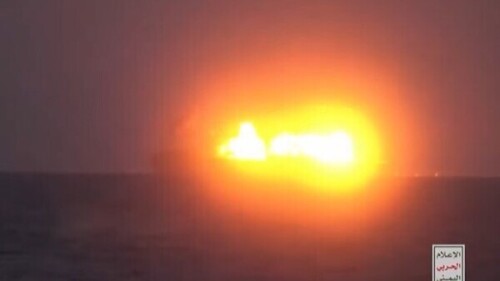“Who, a century back, would have imagined Jews making the better soldiers and Arabs the better publicists?” I asked in 2005.
A foremost example of the Arabs’ p.r. prowess lies in their ability to transform the map of the Arab-Israeli conflict. In the early decades, maps of the Arab-Israeli conflict showed Israel in a vast Middle East, a presence so small, one practically needed a magnifying glass to locate it. These days, however, the conflict is typically portrayed by a huge Israel looming over the fractured West Bank and Gaza areas.
This shift in size implies a shift in underdog status; whereas Israel’s weak-actor status once came through clearly, the Palestinians have now usurped that position, with all its attendant benefits.
A recent study by Joseph A. Vandello, Nadav P. Goldschmied and David A. R. Richards, “The Appeal of the Underdog,” in the Personality and Social Psychology Bulletin takes as its starting point the assumption that “When people observe competitions, they are often drawn to figures that are seen as disadvantaged or unlikely to prevail. … If people are drawn to sympathize with figures seen as underdogs, attitudes about the parties in this conflict might be strategically shaped by emphasizing the underdog status of one group over the other.”
The trio then tested this hypothesis by looking, in part, at the Arab-Israeli conflict. To uncover the possible advantage of being perceived as the underdog, the authors conducted an experiment in which they
operationalized underdog status by subtly reinforcing physical size disparities through maps that shifted the perspective to make salient Israel as large, surrounding the smaller occupied Palestinian territories, or conversely, by making Israel appear small by showing it surrounded by the Arab countries of the greater Middle East.
Click here to enlarge image. Courtesy the Philadelphia Inquirer. |
Having set up the experiment with two maps, the authors “predicted that this shift in visual perspective would create perceptions of underdog status, which would in turn predict support for the underdog side.” They predicted correctly. Small size turns out to be key to being perceived as the underdog:
Participants were asked which side they considered the underdog in the conflict. When Israel was portrayed as large on the map, 70% saw the Palestinians as the underdog. In contrast, when Israel was portrayed as small on the map, 62.1% saw Israel as the underdog,
Participants were also asked toward which group they felt more supportive. When Israel was portrayed as large on the map, 53.3% were more supportive toward the Palestinians. In contrast, when Israel was portrayed as small on the map, 76.7% were more supportive toward Israel.
Participants were asked to rate how much sympathy they felt toward each side in the conflict on a 1 (none) to 5 (a lot) scale. When Israel was portrayed as large on the map, participants expressed slightly more sympathy toward the Palestinians (3.77 vs. 3.73), but when Israel was portrayed as small on the map, participants expressed more sympathy toward the Israelis (4.00 vs. 3.30).
(1) There is something peculiar about rooting in a life-and-death situation for the underdog, as though there were nothing more at stake than a sporting championship, but so be it. Modern life asks one to make many decisions about issues where knowledge is lacking; and the views of a poorly informed public can drive the poll-driven politics of mature democracies.
(2) Pulling for the underdog fits into a larger context. For example, I documented in 2006 (in “Strange Logic in the Lebanon War”) that “taking casualties and looking victimized helps one’s standing” in the battle for public opinion.
(3) Wanting to appear the underdog or to be taking heavier casualties inverts the historic imperative, as I put it in 2006, “whereby each side wants to intimidate the enemy by appearing ferocious, relentless, and victorious.”
(4) This inversion is one of the many ways in which warfare has fundamentally changed during the past 60 years, turning into a nearly unrecognizable variant of its historic identity.
(5) The framing of a war – shaping how it is perceived – has reached such importance that, as I wrote in 2006, “the Clausewitzian center of gravity has moved from the battlefield to the op-eds and talking heads. How war is perceived has as much importance as how it actually is fought.”
(6) Weak but innovative organizations like Hezbollah and Hamas have better adapted to this new reality than have powerful but tradition-bound Western governments.
(7) Those governments need to wake up to the fundamental importance of public relations in war.









